By Conrad Waters
The following feature was first published in the Ships Monthly magazine and subsequently by the Heritage Machines website on 19th October 2022.
The Royal Navy’s series of County class cruisers were built as a direct result of the Washington Naval Treaty that was signed between the major maritime powers in 1922. Aimed at preventing a new naval arms race similar to the one that preceded World War I, the treaty all but ended the construction of new capital ships over the following decade. An unexpected – and perverse – consequence of the new restrictions was a renewed focus on cruiser construction, the most powerful type that could now be built under the treaty’s restrictions.

The new ‘treaty cruisers’ were limited to a standard displacement of 10,000 tons and a main armament of 8-inch (203mm) calibre guns. Unsurprisingly, all the treaty signatories decided to build new ships that fully utilised these thresholds. However, designing such cruisers proved more challenging than expected. Different navies adopted various compromises with respect to areas such as armour, seakeeping and propulsion as they struggled to produce acceptable designs.
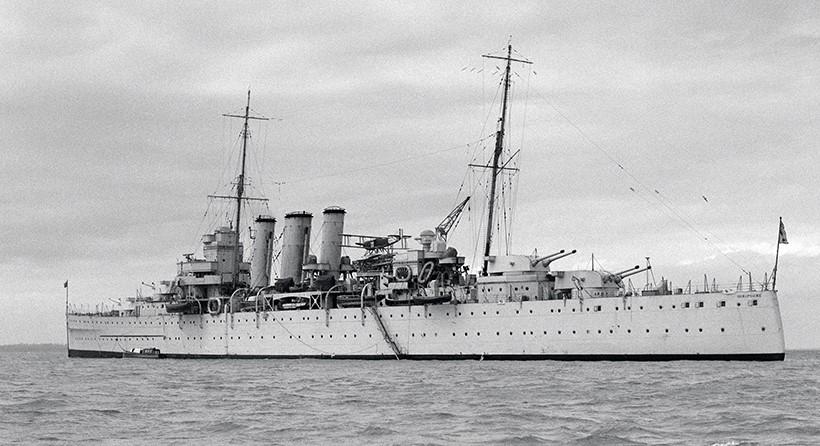
Wartime experience
Utilising the vast practical experience it had gained during the Great War, the Royal Navy’s design approach was arguably more effective than most. Encompassing eight 8-inch guns in four dual-purpose twin turrets, its new ships had good speed and a large, weatherly hull for effective operation along the British Empire’s all-important trade routes.

Probably reflecting the experience of Jutland, magazine spaces were protected by heavily armoured internal boxes. The main area of compromise was protection for other areas, such as the machinery spaces, which received only limited armour.
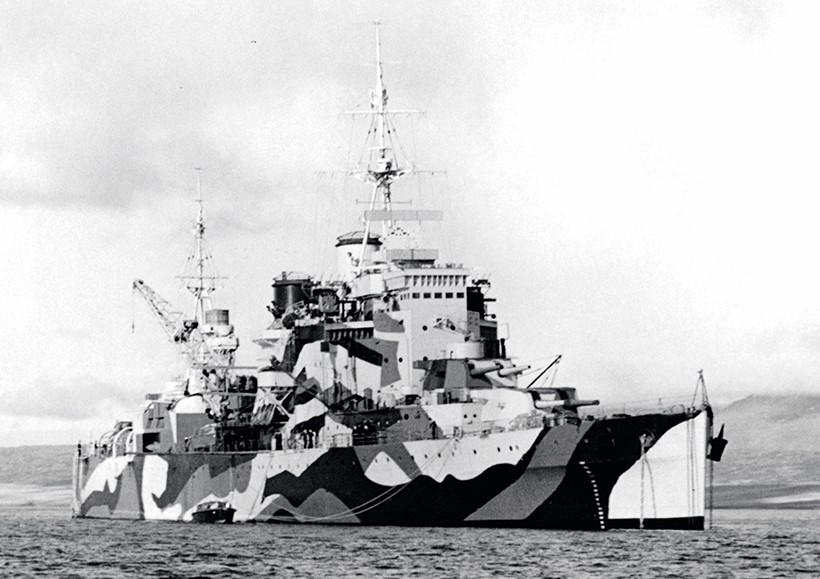
Once the design process was concluded, orders flowed relatively quickly. Five ships of the initial Kent class were approved under the 1924 construction programme, a number boosted to seven by an Australian order for an additional pair. They were rapidly followed by four London class cruisers, authorised in 1925, and two Norfolk class variants in 1926; both classes incorporating incremental improvements over their predecessors. The combined total of 13 County class ships represented the largest Royal Navy cruiser series of the inter-war years.
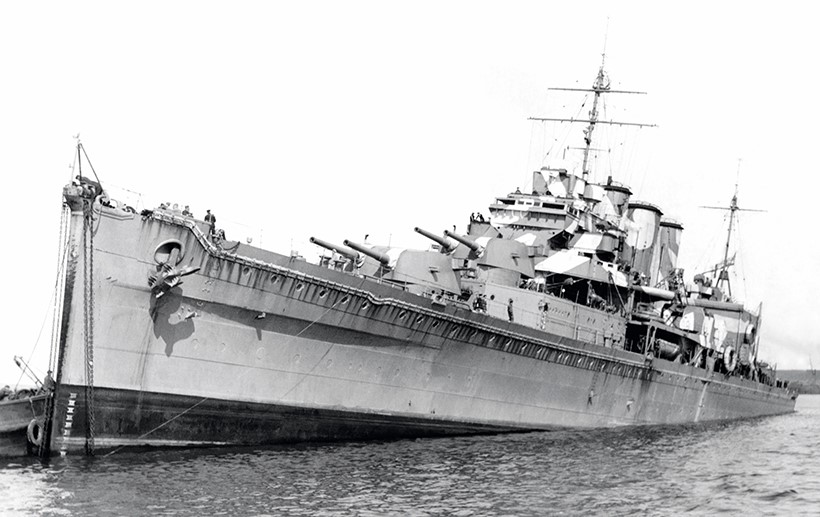
The County class’s main weakness was, arguably, their cost. This amounted to around £2.1 million a ship, around twice that of the smaller D class light cruisers armed with 6-inch guns. This became a growing problem as the Admiralty struggled to afford the large numbers of cruisers it required against a backdrop of declining naval spending. After briefly turning its attention to smaller 8-inch cruisers – York and Exeter – the Royal Navy reverted to ordering cheaper, 6-inch cruisers in a ‘quantity over quality’ approach.
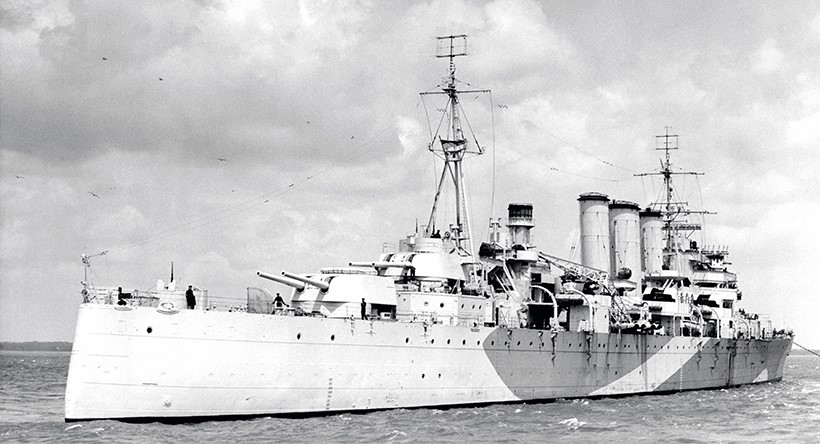
Nevertheless, the Counties remained an essential part of the fleet. A major programme of mid-life modernisation from the mid-1930s onwards saw significant improvements to the five Royal Navy Kent class vessels and a more radical reconstruction of London. The outbreak of World War II prevented the other ships from being rebuilt.

As the Royal Navy’s most heavily armed cruisers, the Counties played an important role in the conflict. Their size and endurance made them well suited for protecting the shipping routes, where the sinkings of the German raiders Atlantisand Pinguin were among their successes. The interception and destruction of the battleship Bismarck would not have been possible without the effective tracking performed by Norfolk and Suffolk. Norfolk also played an important part in the sinking of the battlecruiser Scharnhorst.
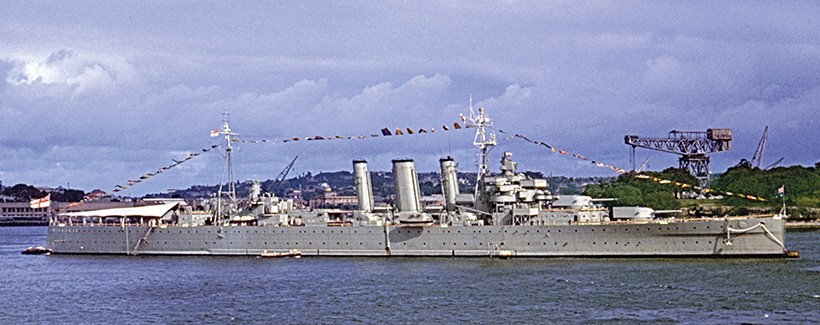
Three Counties were lost in the conflict, all to the Japanese. Cornwall and Dorsetshire were overwhelmed by Japanese carrier aircraft during an Indian Ocean raid in April 1942. The Australian Canberra was scuttled after sustaining heavy damage the following August in the battle of Savo Island.
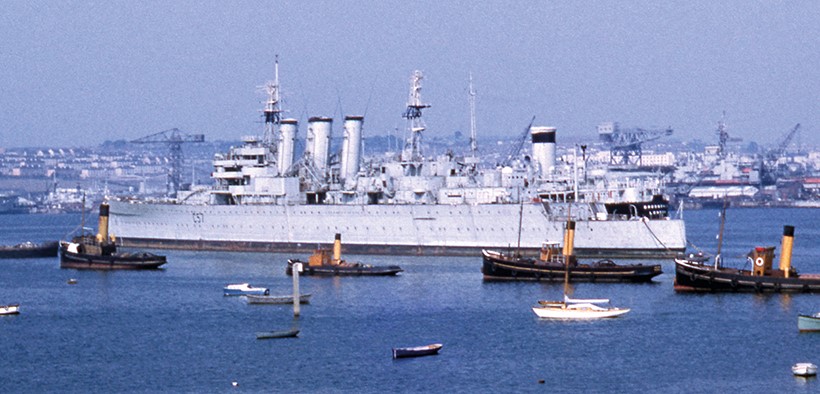
The surviving ships were close to the end of their design lives at the end of hostilities and most had made the final voyage to the scrapyard by 1950. However, Australia and Shropshire – the latter transferred to the Royal Australian Navy as a replacement for Canberra – survived into the mid-1950s. Among the Royal Navy ships, Devonshire served as a cadet training ship until 1954, while Cumberland also enjoyed a second career as a specialised trials cruiser. It was not until the end of the decade that she finally decommissioned, bringing the class’s illustrious 30-year career to a close.
The Spanish Navy built two heavy cruisers to a modified County class design at the then British-owned Ferrol shipyard between 1928 and 1936. One – Baleares – was lost during the Spanish Civil War, but the other, Canarias, went on to have a lengthy career, being scrapped in 1977. This 1967 photograph shows the clear resemblance of the Spanish ships to the Royal Navy’s design.
Source: Heritage Machines website, https://heritagemachines.com/nostalgia/county-class-ships/?utm_campaign=1111526_October%202022&utm_medium=email&utm_source=Kelsey%20Media%20Ltd&dm_i=5D8F,NTNQ,31BOYH,2VND6,1




